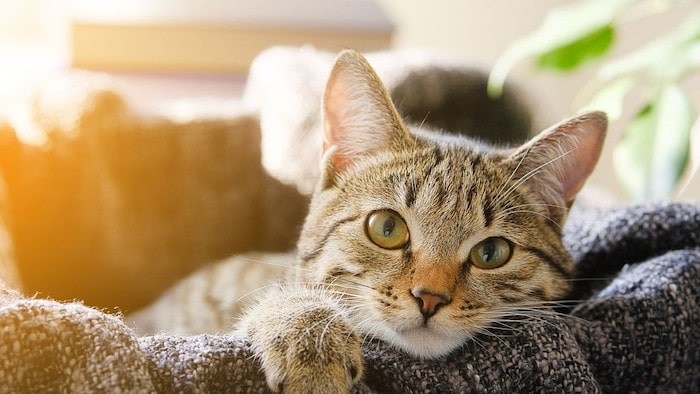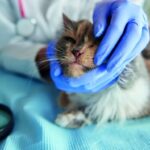As cat owners, we always strive to provide the best care and attention to our furry companions. From monitoring their diet to ensuring they receive regular exercise, we take every step to ensure their well-being. But how often do we pay attention to their respiration rate? Many of us may not realize the importance of understanding and monitoring our cats’ breathing patterns.
In this article, we will delve into the world of cat respiration rate, exploring what is considered normal, what factors can affect it, and why it’s crucial to keep a watchful eye on this vital aspect of our cats’ health. By gaining a deeper understanding of their breathing patterns, we can become more proactive in ensuring our feline companions lead happy, healthy lives.
So, let’s dive in and discover what you need to know about your cat’s respiration rate.
What is a Normal Respiration Rate for a Cat?
In a normal cat with no diseases impacting the respiratory system, the breathing rate should be between 15–30 breaths per minute when they are resting, calm, or asleep. You can count this rate by watching your cat’s chest rise and fall as they breathe.
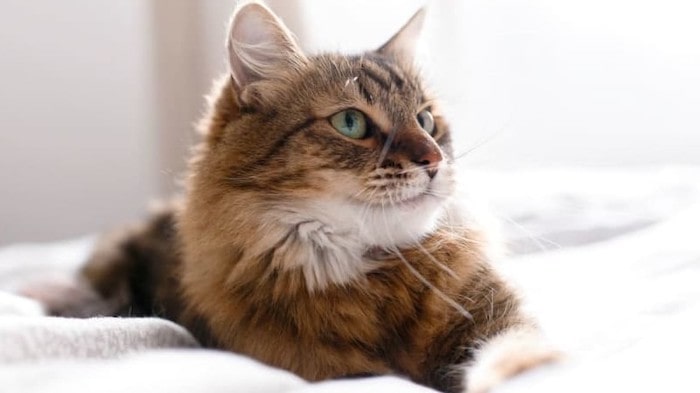
This breathing rate is for a cat that is at rest or relaxed. If your cat just ran around the house, it’s normal for the breathing rate to be slightly elevated. If your cat is asleep and has a respiratory rate of 50, that is a major concern.
If you’re worried about your cat’s respiratory rate, it’s a good idea to measure the rate several times to ensure you’re getting an accurate number.
How to Measure Your Cat’s Breathing Rate
Measuring your cat’s breathing rate is easy and non-invasive. You can do it at home with a timer and a watchful eye. Here are the steps to follow:
- Find a time when your cat is resting comfortably or sleeping, but not purring. Purring can affect the breathing rate and make it harder to count.
- Watch your cat’s chest rise and fall as they breathe. One breath means one full inhale and one full exhale.
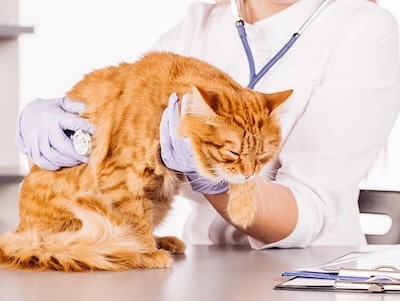
- Using a timer, count how many breaths your cat takes in 30 seconds. Start your count from zero.
- Multiply the number of breaths by two to get the number of breaths per minute.
For example, if you count 12 breaths in 30 seconds, your cat’s respiration rate is 12 x 2 = 24 breaths per minute.
It’s a good idea to measure your cat’s breathing rate several times to get an average and a baseline. You can also keep a record of your cat’s breathing rate over time to monitor any changes or trends
Common Causes and Symptoms of Abnormal Breathing Rate in Cats
Sometimes, your cat’s breathing rate may be higher or lower than the normal range. This can indicate a problem with their respiratory system or other organs. There are two terms that describe abnormal breathing rates in cats:
1) Tachypnea: This means abnormally rapid, shallow breathing. In cats, this means more than 40 breaths per minute.
2) Bradypnea: This means abnormally slow, deep breathing. In cats, this means less than 10 breaths per minute.
Both tachypnea and bradypnea can be caused by various factors, such as:
- Anemia: A low red blood cell count that reduces the oxygen-carrying capacity of the blood.
- Asthma: A chronic inflammatory condition that causes narrowing of the airways and difficulty breathing.
- Emotional distress: Fear, anxiety, or excitement that triggers the fight-or-flight response and increases the heart rate and breathing rate.
- Exertion: Physical activity that increases the oxygen demand and the breathing rate.
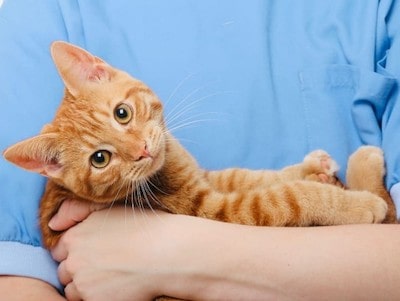
- Extreme heat: High temperatures that cause dehydration, overheating, and panting.
- Fluid around the lungs: A buildup of fluid in the chest cavity that compresses the lungs and reduces their function.
- Heart disease: A condition that affects the heart’s ability to pump blood efficiently and deliver oxygen to the body.
- Respiratory infection: A bacterial or viral infection that causes inflammation and mucus production in the airways and lungs.
If your cat has an abnormal breathing rate, you may also notice other symptoms that indicate respiratory distress or difficulty, such as:
- Breathing with mouth open and neck stretched out
- The belly and chest moving for each breath
- Noisy or labored breathing
- Fatigue
- Gagging
- Panting
- Blue or pale gums
- Coughing
What are Some Signs of Respiratory Distress in Cats?
Respiratory distress means that your cat is having difficulty breathing or getting enough oxygen. This is a serious and potentially life-threatening condition that requires immediate veterinary attention.
Some signs of respiratory distress in cats include:
- Increased respiratory rate: More than 40 breaths per minute when resting or sleeping is considered abnormal and indicative of tachypnea (rapid shallow breathing).
- Labored breathing: If your cat is struggling to breathe or using extra muscles to breathe, such as the abdomen or neck, this is called dyspnea (difficulty breathing).
- Open-mouth breathing: Cats normally breathe through their noses, so if they are breathing through their mouths, this is a sign of severe respiratory distress.

- Noisy breathing: If your cat is making sounds such as wheezing, coughing, sneezing, snoring, or gurgling when breathing, this may indicate an obstruction or inflammation in the airways.
- Pale or blue gums: If your cat’s gums or tongue are pale, white, or blue, this means that they are not getting enough oxygen in their blood and are suffering from hypoxia (low oxygen) or cyanosis (blue coloration).
- Lethargy or weakness: If your cat is less active, responsive, or alert than usual, this may indicate that they are not feeling well or have low energy due to poor oxygenation.
- Loss of appetite or weight: If your cat is not eating or drinking enough or losing weight, this may indicate that they have an underlying health problem that is affecting their breathing.
If you notice any of these signs in your cat, do not wait and seek veterinary help immediately. Your cat may need oxygen therapy, medication, surgery, or other treatments to restore their normal breathing and prevent further complications.
How to Prevent and Treat Respiratory Problems in Cats
There are some general tips that can help you prevent respiratory problems in your cat, such as:
- Provide fresh water and a balanced diet for your cat
- Avoid extreme heat or cold and keep your cat indoors or in a shaded area
- Reduce stress and anxiety in your cat by providing a safe and comfortable environment
- Keep up with regular vaccinations and parasite prevention for your cat
- Avoid exposing your cat to smoke, dust, chemicals, or other irritants that can affect their lungs
- Monitor your cat’s breathing rate and behavior and report any changes to your vet
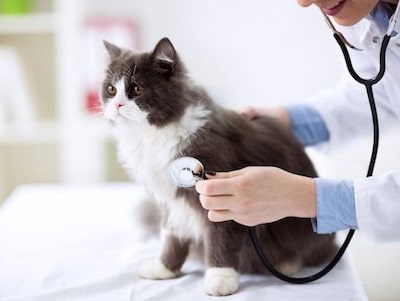
If your cat has a respiratory problem, you should follow your vet’s advice and instructions on how to treat it. Depending on the cause and severity of the problem, your cat may need:
- Oxygen therapy: This involves providing supplemental oxygen to your cat through a mask, a tube, or a chamber. This can help improve your cat’s oxygen levels and ease their breathing.
- Medication: This may include antibiotics, anti-inflammatories, bronchodilators, diuretics, or other drugs that can help treat the underlying cause of the problem and relieve the symptoms.
- Surgery: This may be necessary to remove foreign objects, tumors, fluid, or other obstructions that are affecting your cat’s breathing.
- Other treatments: This may include nebulization, chest drainage, blood transfusion, or other procedures that can help improve your cat’s respiratory function.
FAQ
When should I be concerned about my cat’s respiration rate?
If your cat’s respiration rate consistently exceeds 30 breaths per minute while at rest or if you notice any sudden or significant changes in their breathing patterns, it is advisable to consult a veterinarian. Rapid, labored, or noisy breathing can be indicators of underlying health issues that require professional attention.
Can cat respiration rate vary during sleep or physical activity?
Yes, it’s normal for a cat’s respiration rate to increase during physical exertion or playtime. During sleep or relaxation, their breathing rate may decrease and appear more regular. It’s important to understand your cat’s baseline respiration rate during different activities to better identify any abnormalities.
re there specific breeds of cats that may have different respiration rates?
While there is no direct correlation between respiration rate and specific cat breeds, certain breeds, such as those with flat faces (like Persians and Himalayans), may experience breathing difficulties due to their facial structure. These cats may exhibit higher respiration rates or have more labored breathing as compared to breeds with longer muzzles.
Is it normal for a cat’s respiration rate to change with age?
Yes, it’s not uncommon for a cat’s respiration rate to change as they age. Older cats may exhibit slightly higher resting respiration rates compared to younger cats. However, any significant or sudden changes in breathing patterns, regardless of age, should be addressed by a veterinarian.
Well, That’s a Wrap
Understanding and monitoring your cat’s respiration rate is an essential aspect of responsible pet ownership. By paying attention to their breathing patterns, you can gain valuable insights into their overall health and well-being.
A normal respiration rate for a cat at rest typically falls within the range of 20 to 30 breaths per minute. However, it’s crucial to consider factors such as age, size, activity level, and environmental conditions that can influence their respiration rate.
Being aware of any changes or abnormalities in your cat’s breathing can help you detect potential health issues early on. Rapid, labored, or noisy breathing, along with accompanying symptoms like coughing, wheezing, or lethargy, may indicate the presence of underlying respiratory problems or other health conditions.
Prompt veterinary attention is necessary if you observe any concerning signs related to your cat’s respiration. By staying vigilant and proactive in understanding and addressing your cat’s respiration rate, you can ensure that your feline companion enjoys a life filled with optimal health, comfort, and happiness.

